On View
See Inside Artist Filip Custic’s First Solo Show in Tokyo, Where His ‘Super-Bionic’ Sculptures Meld the Body and Technology
"Human Product" is on view at Parco Museum in Tokyo through April 24.
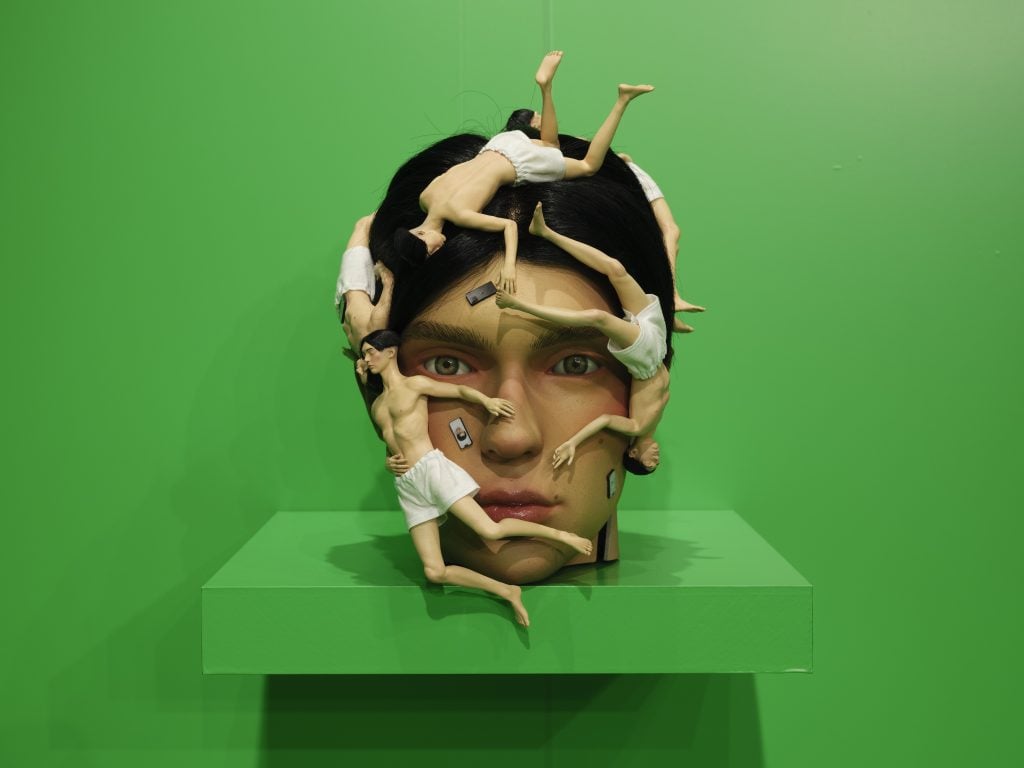
"Human Product" is on view at Parco Museum in Tokyo through April 24.

Richard Whiddington

Will humanity know when singularity has arrived? This is a central question propelling the ascent of young Spanish-Croatian artist Filip Custic.
His works in response have focused on the human body as a canvas, lavishing it with color, layering it with 20th-century motifs of art and psychoanalysis, and fragmenting it with mirrors and screens. Often, the results appear like fantastical scenes composed for high-end fashion magazines and not by accident: the 30-year-old began in marketing working with the likes of Vogue, Esquire, and GQ, and remains, perhaps surprisingly, un-jaded by the creative potential of the commercial world.
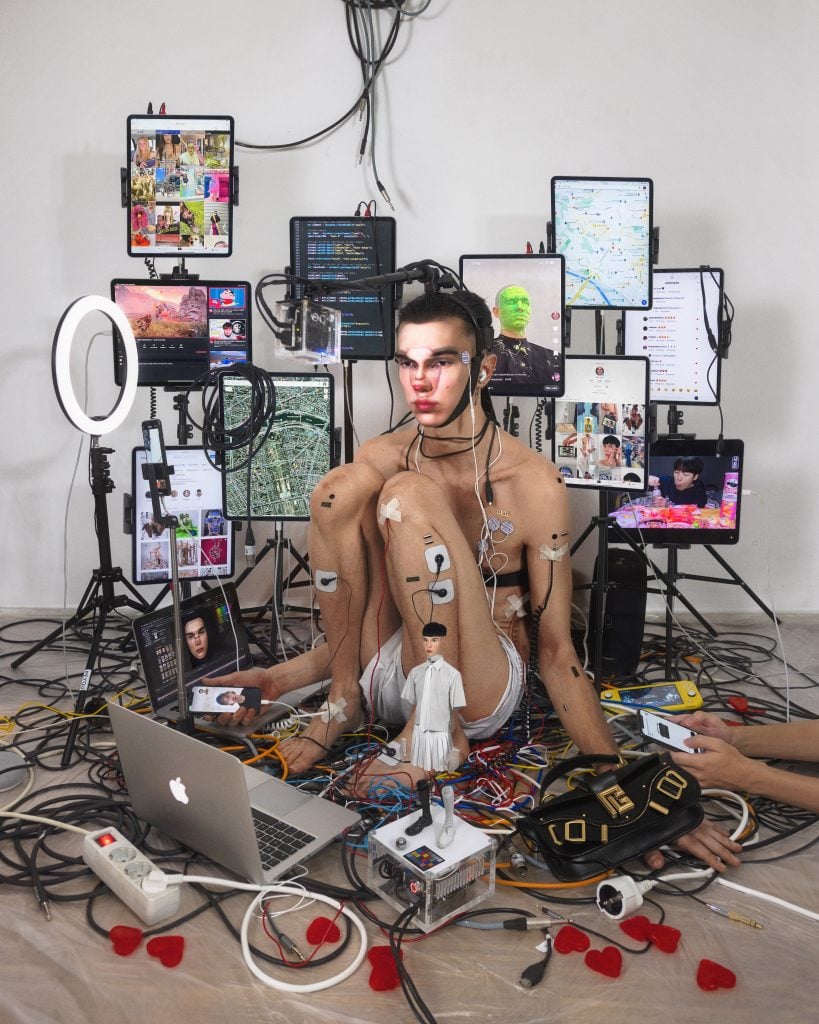
Filip Custic, virtualhypermetasuperultramegaconnected. Photo: Filip Custic, courtesy Onkaos.
Fitting, then, that one of Custic’s first solo shows has opened inside a luxury shopping mall, Tokyo’s Parco Museum. The exhibition, “Human Product,” stages many of the Madrid-based artist’s founding works that present the body, most often his own, as a site for tweaking and upgrading, just like an operating system, as the artist puts it. Three new sculptural works place Custic within the context of collectible doll culture. Again, Custic believes presenting such works in Japan, the main developer of collectible dolls, makes Parco an ideal location.
“In the show, I basically want people to experience new paradigms, new situations, so we can think out ‘human programming,’” Custic told Artnet News. “I would like to open a conversation focused on how consumerist culture attempts to turn us into ‘commodities.'”
In zzz (2023) and human product (2023), new works in which Custic recasts himself as miniaturized dolls, he calls attention to the somnolent qualities of technologies, but not as you might expect. “I want to express the possibility of being able to sleep in the system and then wake up,” Custic said. “It is a big pressure to be a human being and we must look for moments of relaxation of our consciousness.”
This line of thinking applies to the overall exhibition. In his “Bolso de Pantalla” series (2021), a collection of handbags with incorporated screens that play his own branded messaging, he highlights the idea that carrying a handbag turns a human into a walking advertisement, but not to revolutionary ends.
“Consumerist culture turns us into commodities,” Custic said. “Our existence is more valid if it can be monetized.” A far-cry from calls to reclaim our digital identities.
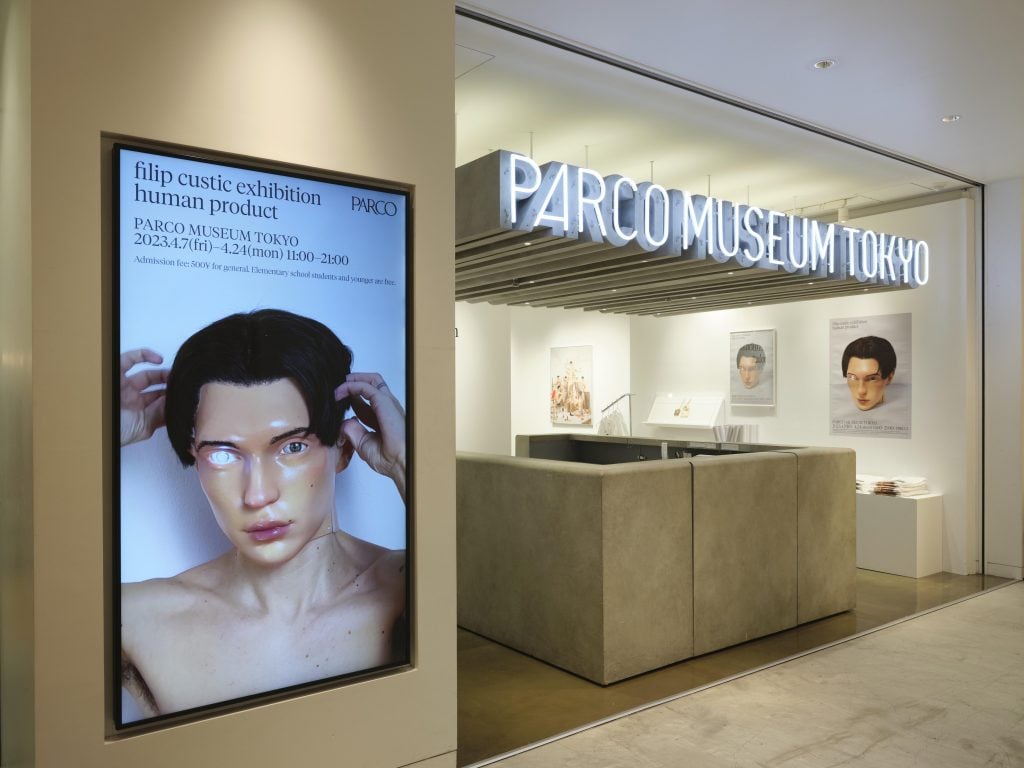
Installation view of “Human Product” at Parco Museum, Tokyo. Photo courtesy Onkaos and Filip Custic.
Custic’s arrival in Japan marks the latest in a series of commercial breakthroughs for the artist. In 2018, he provided the visual thematics for Catalan pop star Rosalía’s sophomore album El mal querer. In a series of moving digital sculptures, Custic portrayed Rosalía as a divine figure immersed in worlds of modern spiritualism—think golden crucifixes, moon cycles, and energy circles all cast in scenes of flashing radiance. He later created work to accompany music projects for Julia Stone and Lil Nas X.
These projects stayed true to Custic’s glossy aesthetic, repeating much-used symbols such as cracked mirrors and the fragmented body, but left behind technological considerations. There’s little evidence of Custic making such a turn in his own work.
“It’s difficult to separate the role of technology in my artistic practice and in my life,” he said. “Technology is the only innovative element of our era. I think we will look super-bionic in the future and we will ask, ‘at what point did all this happen?’” Some would argue that moment has already arrived.
See more images of the exhibition below.
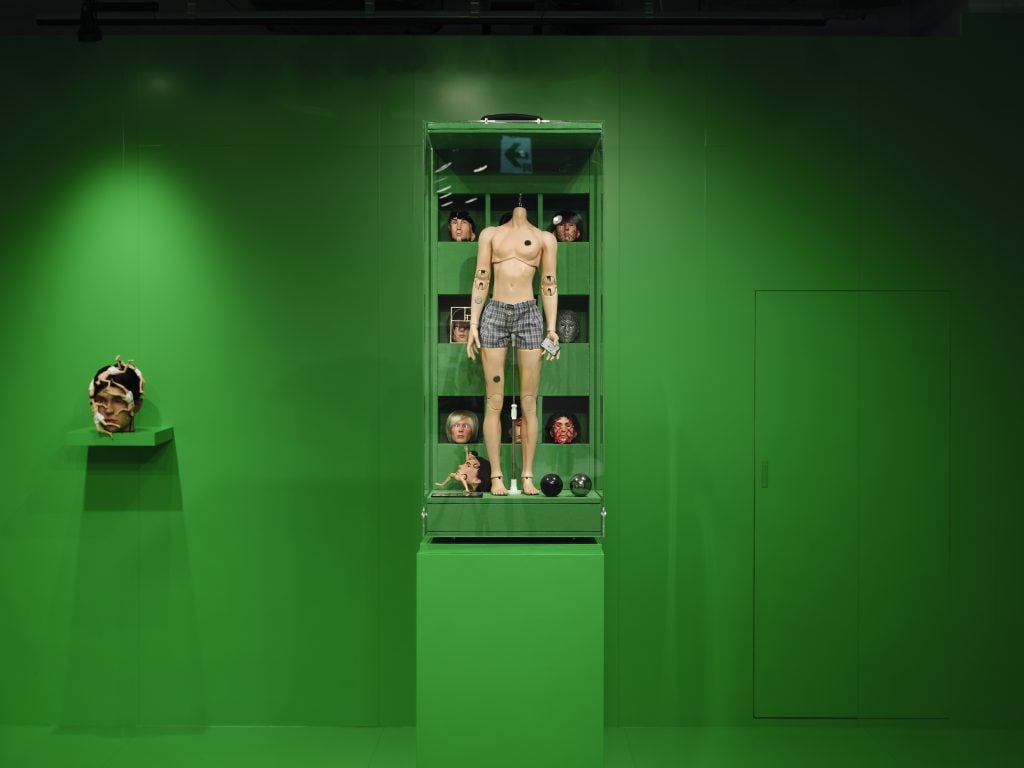
Installation view of “Human Product” at Parco Museum, Tokyo. Photo courtesy Onkaos and Filip Custic.

Filip Custic, “Bolso de pantalla” (2021). Photo: Filip Custic, courtesy of Onkaos.
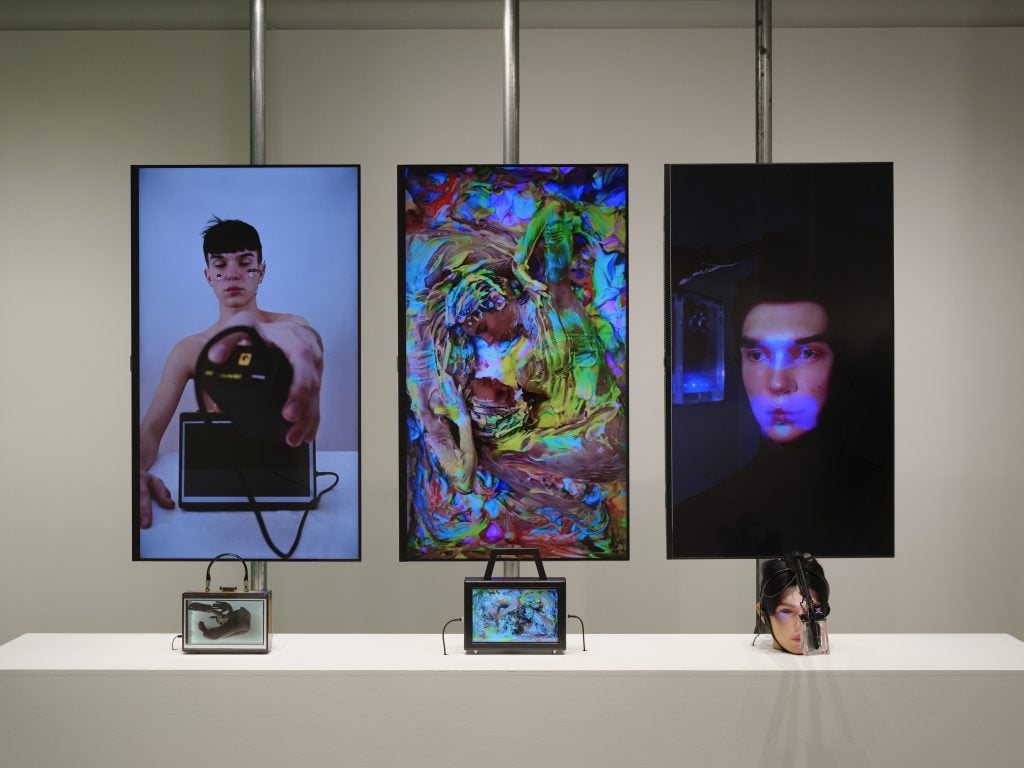
Installation view of “Human Product” at Parco Museum, Tokyo. Photo courtesy Onkaos and Filip Custic.
“Human Product” is on view at Parco Museum, 15-1 Udagawa-cho, Shibuya-ku, Tokyo, through April 24.